Supermicro SYS-1019P-WTR Performance
For this exercise, we are using our legacy Linux-Bench scripts which help us see cross-platform “least common denominator” results we have been using for years as well as several results from our updated Linux-Bench2 scripts.
At this point, our benchmarking sessions take days to run and we are generating well over a thousand data points. We are also running workloads for software companies that want to see how their software works on the latest hardware. As a result, this is a small sample of the data we are collecting and can share publicly. Our position is always that we are happy to provide some free data but we also have services to let companies run their own workloads in our lab, such as with our DemoEval service. What we do provide is an extremely controlled environment where we know every step is exactly the same and each run is done in a real-world data center, not a test bench.
We are going to show off a few results, and highlight a number of interesting data points in this article.
Python Linux 4.4.2 Kernel Compile Benchmark
This is one of the most requested benchmarks for STH over the past few years. The task was simple, we have a standard configuration file, the Linux 4.4.2 kernel from kernel.org, and make the standard auto-generated configuration utilizing every thread in the system. We are expressing results in terms of compiles per hour to make the results easier to read:
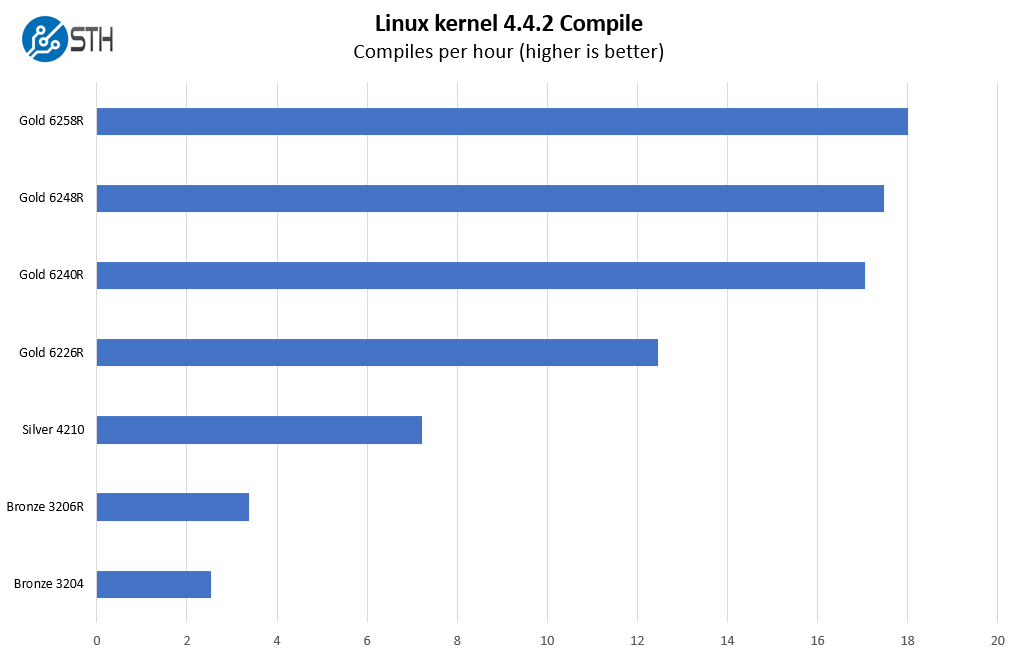
At this point in the Xeon Scalable product lifecycle, we know about what we can expect in these sockets. Performance generally scales well but we do see some TDP limitations of the Xeon platform at higher core counts.
c-ray 1.1 Performance
We have been using c-ray for our performance testing for years now. It is a ray tracing benchmark that is extremely popular to show differences in processors under multi-threaded workloads. We are going to use our 8K results which work well at this end of the performance spectrum.
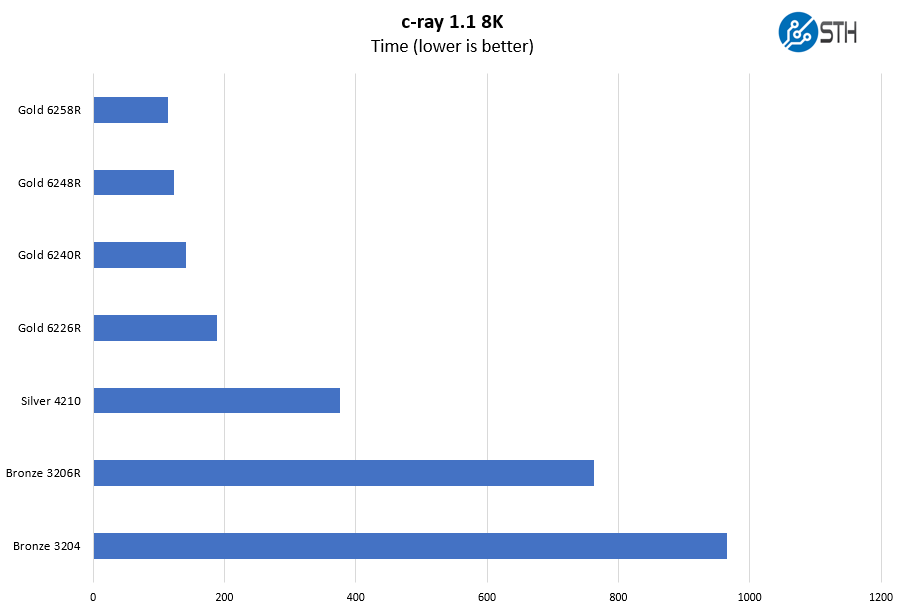
The Intel Xeon Gold 6240R performance in single-socket configurations is going to be very similar to, and often slightly better than an Intel Xeon Platinum 8260. They are both 165W TDP 24 core CPUs with similar clock speeds albeit the refresh parts can scale higher. The three enabled UPI links on the Xeon Platinum 8260 do not matter in a platform like the SYS-1019P-WTR because there is a single socket.
7-zip Compression Performance
7-zip is a widely used compression/ decompression program that works cross-platform. We started using the program during our early days with Windows testing. It is now part of Linux-Bench.
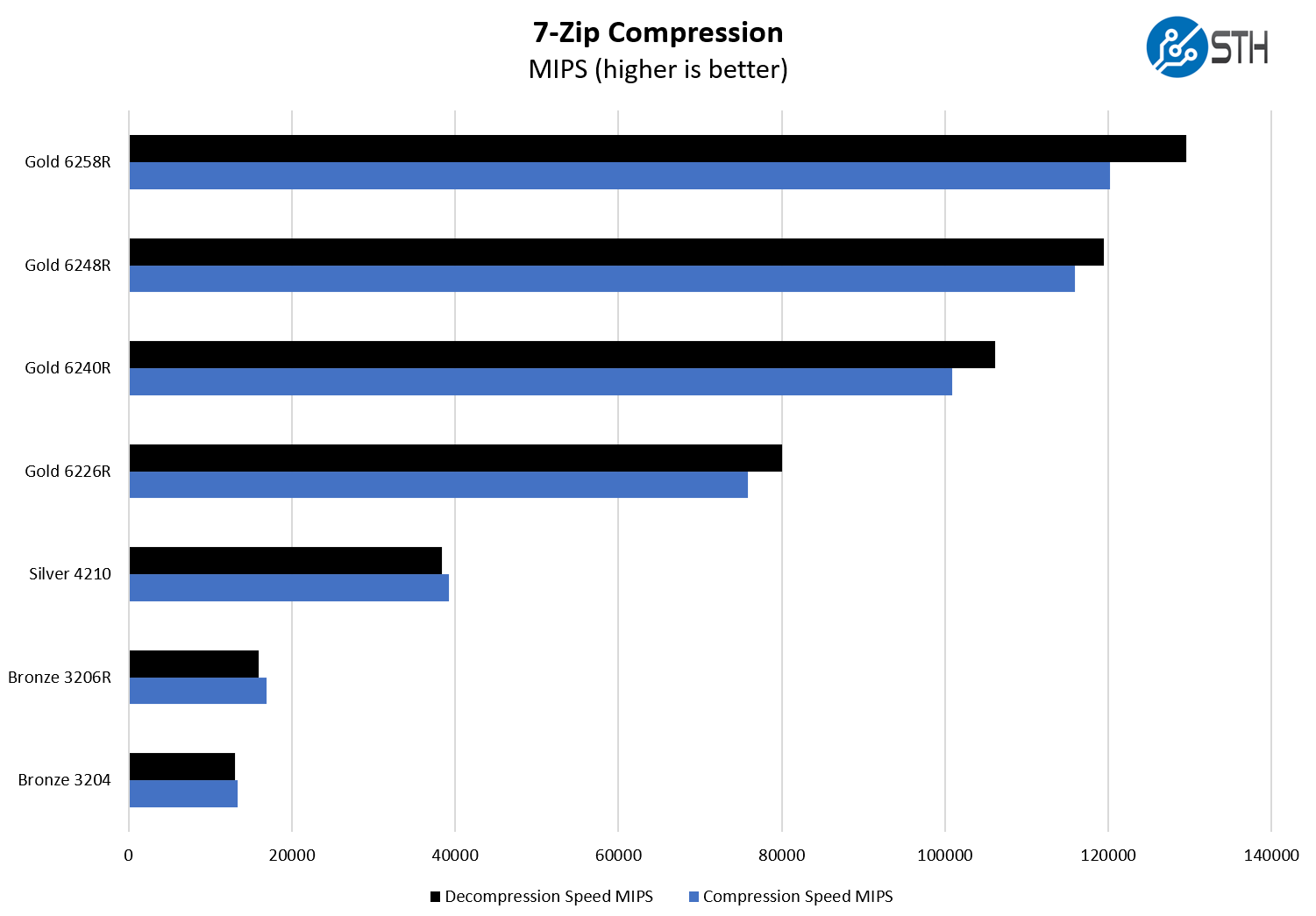
As we would expect, the Intel Xeon Gold 6248R is noticeably faster at only around $250 more. The Gold 6248R has higher TDP and power consumption. With that said, if power and that $250 are not the primary drivers for a purchase decision, moving to the higher clock speed Gold 6248R is probably wise.
OpenSSL Performance
OpenSSL is widely used to secure communications between servers. This is an important protocol in many server stacks. We first look at our sign tests:
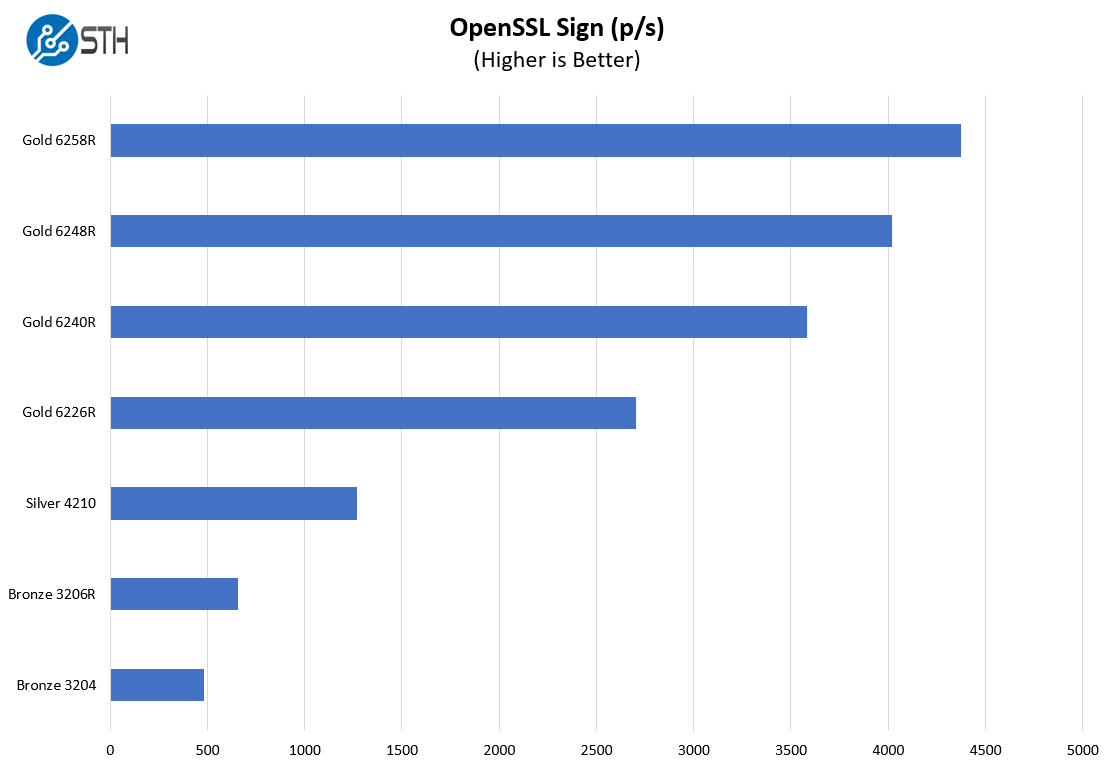
Here are the verify results:
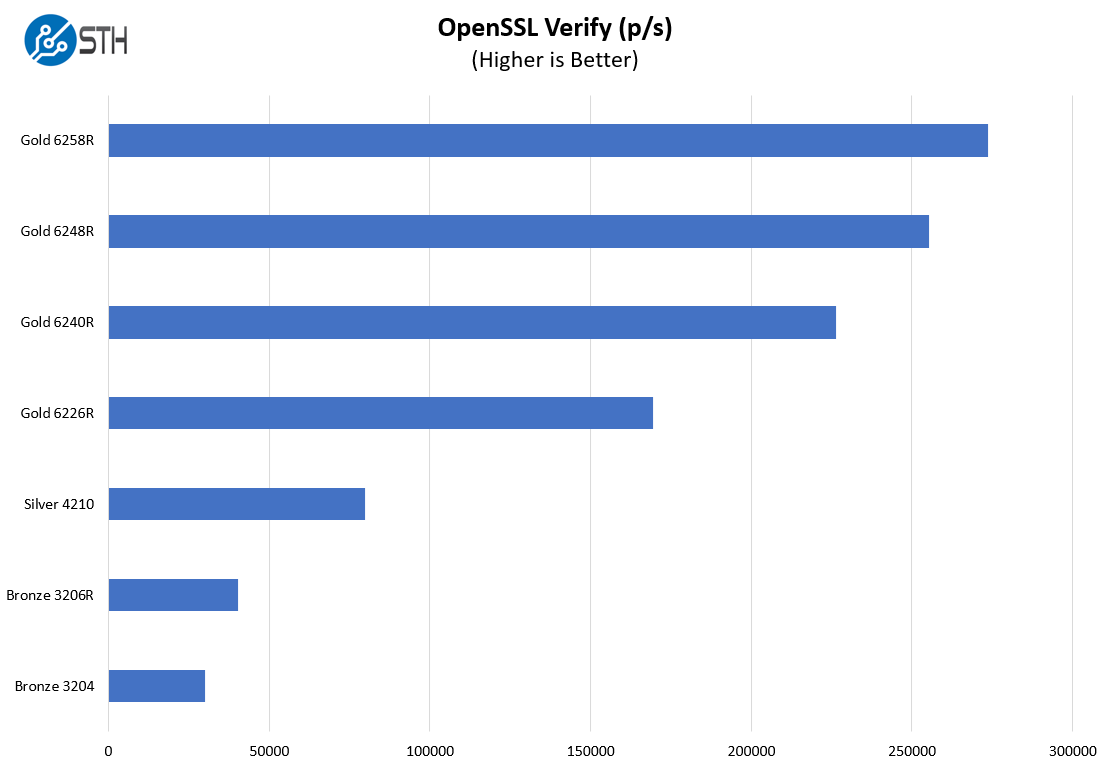
Intel offers a fairly wide range of options in the socket. If you just need a few 2.5″ SAS/ SATA SSDs to be online with some RAM and using the onboard 10Gbase-T NICs of the SYS-1019P-WTR, then the Xeon Bronze chips, like the Intel Xeon Bronze 3206R to keep costs low. We can certainly see this platform being used as a low-cost single-socket server with lower-cost Xeon SKUs as well.
Chess Benchmarking
Chess is an interesting use case since it has almost unlimited complexity. Over the years, we have received a number of requests to bring back chess benchmarking. We have been profiling systems and are ready to start sharing results:
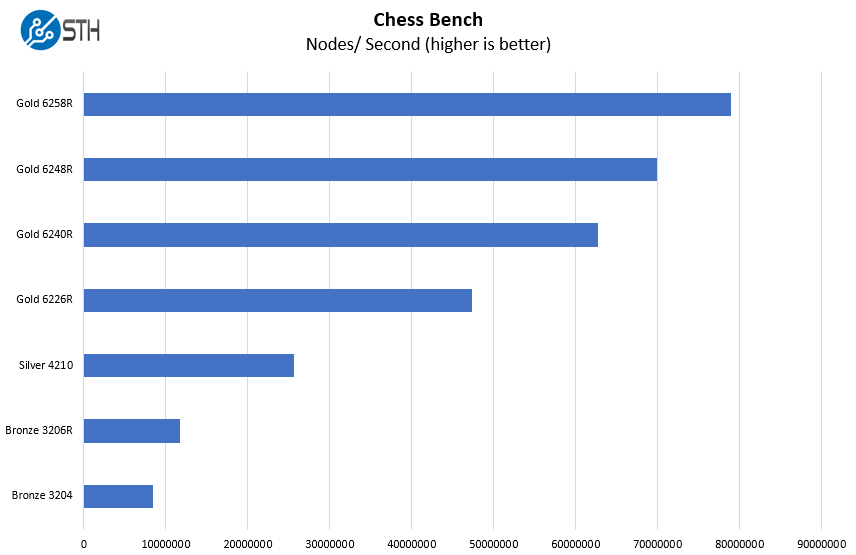
To us, the Xeon Scalable Refresh has made a lot of the Xeon Gold 6000R series very accessible. We did not get to test the U series, but there is an alternative to the Xeon Gold 6226R shown above which is a $1300 list price SKU. The Intel Xeon Gold 6208U is a $989 part with identical 16 cores and clock speeds. We expect these should perform identically. In a platform like the SYS-1019P-WTR one can take advantage of that lower pricing so it is worth looking into while configuring a system.
Next, we are going to move to our power consumption, server spider, and final words.




One thing I’d like you to focus more on is field serviceability. Since you mention the continued lack of a service guide plus the small print SN labels I do not understand the 9.1 design grade – why a server gets an ‘aesthetics’ grade is another point of contention.
Regarding the field serviceability and what I will file under design (in general, not necessarily true for this review):
– Are the PCIe slots tool-less?
– Are the fan connectors on the motherboard and easily reachable with the fan cables or do the fans slot into connectors directly?
– Are cable guides available at all?
– Are cable arms available and if yes, do they stay in place without drooping too much and how easy they’re to use? Do they require assembly, maybe even with tools?
– How easy the rails are installed (both server and rack-wise)
– Are the hard drive caddies tool-less and are they easily slotted in?
– Even seemingly mundane things like PSU and HDD numbering or the lack thereof
All these cost time and money before and during deployment and – this has been my experience – is something Supermicro is sorely in need of improvement. This is also not to say everything is rosy with their direct or indirect competitors; I’ve seen both good and questionable design decisions from HPE, Dell, IBM / Lenovo, Fujitsu, Inspur, Blackcore, Ciara and Asus.
Still, thanks for the indepth review.
To confirm – did the server barebones ship with the rackmount rail kit? I can’t see mention of it either on the product page at Supermicro’s website or in the review.
Thank you.